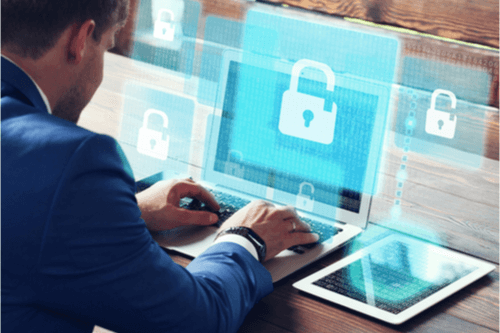It’s a sad fact of modern business that cyber security continues to pose major risks to prospects. Cyber criminals are more active than ever, with around 90% of UK businesses being the victim of attempted attacks; many of which prove successful. Attacks can be absolutely devastating, with hackers sometimes causing millions of pounds in damages.
The methods vary, but it’s almost always the same target: your communications infrastructure. The most valuable commodity in the digital hacking world these days is personal data and business information. If criminals and cyber attackers can access this through your communication channels, they can reap the rewards.
So, what are the latest developments in cyber attacks when it comes to communication? What are the new cyber security threats for businesses in 2020, and how can you put a stop to them? The guidance from our technical experts here at eFax aims to help support organisations facing cyber vulnerability.
Emails Are Still Very Vulnerable
The Faxploit Backdoor Cyber Attack
It turns out you can teach an old dog new tricks. In this case, hackers can teach your old fax machine to give them access to your new IT systems.
Recently, a hacking method was discovered dubbed as the “faxpliot”. It works very simply in practice but can cause nightmares for your business. A fax machine receives information and converts that information into a printable image. It doesn’t ask questions about what it receives — it just does what it is told if the message is compatible. Hackers have realised they can send a fax machine code the hardware believes is an image, but actually gives the hackers access to the fax machine itself.
We know what you are thinking: what’s the worst they can do? Print rude images on your fax machine?
Well, they can actually do a lot of damage. First off, they can take control of your machine, stopping other inbound and outbound fax and slowing your operation down. However, this is not the primary reason hackers attack your fax machine. The fax machine has no firewall or antivirus — basically, in terms of modern data security, it is useless. It cannot stop malicious programs from activating within the system. Once they’ve gained access to your fax machine, hackers can follow network connections from your machine into your other IT systems, such as your business computers and servers. Because the malicious code is already in the system, the network isn’t going to notice (unless your system is very advanced — we’re talking MI5 levels of technology, here).
The fax machine effectively becomes an unlocked backdoor through which hackers can enter. Using this form of cyber attack, hackers can compromise cyber security and get into your systems to steal data, cause damage, plant spyware, ransomware and do much, much more.
But how do you combat this new cyber security threat if you need to fax?
The problem with faxploit, as opposed to other cybersecurity threats, is it exploits old hardware. This makes it very difficult to protect against, as fax machines were not designed to be part of the digital age. They are simply not as adaptive and responsive to 21st-century threats from cyber attacks. When faxpliot was discovered, researchers managed to design a patch to stop the code they identified as a cyber threat from running. This patch, however, only provides a solution to a specific computer script and hackers simply develop new ones. The way fax machines operate means there is no real way to solve the problem.
Instead, you need to look at ways to send a fax without a fax machine. eFax online fax solutions enable complete fax functionality using computers and phones — devices that can be protected by modern security protocols. There is no need for fax hardware at all. You can keep faxing and ditch fax machines today. With the threat of cyber attacks looming, moving to eFax can give you the confidence to carry on sending essential fax without worrying about the implications of owning an outdated fax machine.
Our cloud-based technology removes yet another major risk for your business security. And we’re still not done.
No obligation. No set-up fees. No risk.
Sophisticated and Coordinated Phishing Attacks
The Power of Cloud Tech: Protecting Your Business from Cyber Security Threats
What you’ll notice about these three major problems is they’re all targeting out-of-date systems built before the digital age exploded. They were not fundamentally designed to face the challenges of modern data security. At the time of their inception, the cybersecurity threats just didn’t exist.
But that isn’t the case for cloud technology.
Cloud tech is not the newest solution, but its rise to prominence only happened around 2005, making it far newer than systems like email and fax. The architecture cloud systems are built on was developed during a period when we had a much better understanding of cyber security threats, which means at the core of cloud technology is a structure designed to protect against problems.
To use another analogy, imagine systems like email and fax are medieval civilisations that have never been attacked. They built interlinking villages that offered flexible trading and free-flowing culture. It was easy to go from one village to the other. Then the Vikings attack and the villages had no way to defend themselves because they weren’t prepared. Cloud technology is built on the history of defeats. It’s the villages that built walls and fortifications to keep out invaders — the ones that stopped letting just anyone in.
Build a fortress around your business and stop cybersecurity invaders stealing and destroying what’s yours. Introduce cloud technology and protect yourself from threats to your communication channels.
Cybersecurity threats will remain a risk for businesses into 2020 and far beyond. Now is the time to act to protect your company and develop cloud-based systems to fend off the most dangerous threats. eFax online fax is cloud-hosted software that features high levels of encryption and data protection solutions.
